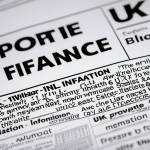Step-by-step classic fish and chips recipe
Discovering how to make fish and chips that mirror the traditional dining experience involves mastering a few key components. Start with fresh white fish like cod or haddock, which suit this classic fish and chips recipe due to their mild flavor and flaky texture. For the batter, combine plain flour, baking powder, and cold sparkling water to create a light, airy coating that crisps to a golden perfection when fried.
Preparation is crucial: keep the batter cold and mix just enough to combine, avoiding overworking which can toughen the coating. Dip the fish thoroughly, letting excess drip off before placing it gently into oil heated to around 180°C (356°F). Fry in small batches to maintain oil temperature and achieve an even, crisp finish.
Also to see : What are the key ingredients in a traditional Lancashire hotpot?
Perfect chips are equally important. Use floury potatoes like Maris Piper or Russets, peeled and cut into thick strips. Soak them in cold water to remove excess starch, then dry well before frying. A two-step frying method works best: initial blanching at 130°C (266°F) softens the potatoes, followed by a hotter fry at 180°C (356°F) to produce golden, crispy exteriors with fluffy interiors.
These traditional fish and chips essentials ensure authenticity and deliver a satisfying, well-balanced meal every time.
Also read : What are the essential spices in traditional UK cooking?
Step-by-step classic fish and chips recipe
Mastering the classic fish and chips recipe hinges on selecting authentic ingredients and applying time-tested techniques. Start with firm white fish like cod or haddock. These provide the ideal flaky texture and mild flavour traditional to this dish. For the batter, blend plain flour, baking powder, and cold sparkling water or beer to achieve a light, crisp coating.
Preparation is crucial. Pat your fish dry to help the batter adhere evenly. Dip the fillets into the batter, allowing excess to drip off before immersing them in hot oil heated to about 180°C (350°F). Fry until golden and crispy—usually 4 to 5 minutes per side. Maintaining oil temperature prevents soggy fish by ensuring the batter crisps quickly, sealing in moisture.
For perfect chips, use starchy potatoes such as Maris Piper or Russet. Cut evenly to promote consistent cooking. Parboil the chips briefly, then drain and dry. Double frying is essential: first at a lower temperature to cook through, then at higher heat for a golden, crunchy finish. This approach ensures classic fish and chips with the hallmark crispness and tender interiors that define this beloved traditional dish.
Step-by-step classic fish and chips recipe
Mastering how to make fish and chips begins with selecting the right ingredients. Start by choosing fresh white fish such as cod or haddock, prized for their delicate texture and classic flavor. For the batter in a classic fish and chips recipe, blend plain flour, baking powder, and sparkling cold water. The batter must remain cold and lightly mixed to ensure a crispy, golden finish without being heavy.
Preparation plays a key role in achieving that perfect crunch. Pat the fish dry before dipping it fully into the batter, allowing excess to drip off to avoid sogginess. Fry in oil heated steadily to 180°C (356°F) so the batter crisps quickly while the fish cooks through gently.
For the chips, the secret lies in a two-stage frying technique. Cut peeled, floury potatoes into thick strips, soak them in cold water to remove starch, then dry thoroughly. Blanch the chips at a lower temperature (around 130°C/266°F) to soften without browning. Finish with a hotter fry at 180°C to achieve golden, crispy exteriors and fluffy interiors.
These steps ensure your traditional fish and chips maintain their beloved texture and taste, delivering an authentic and satisfying meal every time.
Step-by-step classic fish and chips recipe
Mastering how to make fish and chips authentically means focusing on essential ingredients and precise techniques. Choose firm, flaky white fish like cod or haddock—these are staples for the traditional fish and chips experience due to their mild flavour and texture that holds up during frying. The batter must be light and crisp; mix plain flour with baking powder and cold sparkling water, ensuring it stays cold and mixed minimally to avoid gluten development, which can toughen the coating.
Preparation sets the foundation for success. Thoroughly pat the fish dry to help the batter adhere evenly, then dip each fillet, allowing excess batter to drip off before frying. Maintain the oil temperature around 180°C (350°F) to ensure the batter crisps quickly, sealing moisture and preventing greasiness.
For perfect chips, select starchy potatoes such as Maris Piper or Russet, peeled and cut into uniform thick strips. Soak them in cold water to remove excess starch, then drain and dry completely—this prevents sogginess. Use a two-step frying method: first blanch the chips at a lower temperature (about 130°C/266°F) to cook through, then fry at 180°C (350°F) until crispy and golden. These steps are vital for achieving the tender interior and crunchy exterior fundamental to the classic fish and chips recipe.
Step-by-step classic fish and chips recipe
Achieving traditional fish and chips perfection starts with selecting essential ingredients. Opt for fresh white fish such as cod or haddock, prized for their mild flavor and flaky texture. Use plain flour and baking powder for the batter, combined with cold sparkling water to create a light, crisp coating.
Preparation is key to a successful classic fish and chips recipe. Pat the fish dry before dipping it fully into the batter, allowing excess to drip off. This helps prevent soggy batter and promotes even frying. Heat oil to a steady 180°C (356°F) to ensure the batter crisps quickly while cooking the fish through. Avoid overcrowding the fryer to maintain consistent oil temperature and texture.
For perfect chips, begin with starchy potatoes like Maris Piper or Russets. Peel and cut into thick strips, then soak in cold water to remove excess starch. Dry thoroughly before frying. Use a two-step frying technique: blanch chips first at 130°C (266°F) to soften, then fry at 180°C to crisp and golden-brown them. This method yields chips with fluffy interiors and crunchy exteriors every time.
Mastering how to make fish and chips with these ingredient choices and frying methods guarantees an authentic, satisfying meal true to the traditional fish and chips experience.
Step-by-step classic fish and chips recipe
Creating an authentic traditional fish and chips dish hinges on selecting quality ingredients and applying precise frying methods. Start with fresh, firm white fish such as cod or haddock. These varieties are favored due to their flaky texture and mild flavor that withstand frying without falling apart.
The batter is key to achieving a crisp, golden finish. Use plain flour combined with baking powder and icy sparkling water, keeping the mixture cold and only lightly stirred. This prevents gluten formation, ensuring the coating remains light rather than tough.
Before frying, pat the fish dry so the batter adheres smoothly, then dip and let excess drip off. Heat oil to a consistent 180°C (350°F) to quickly seal the batter around the fish, locking in moisture while forming a crunchy shell. Lower or fluctuating temperatures risk greasy or soggy results.
For immaculate chips, choose starchy potatoes like Maris Piper or Russets. Cut them into thick, even strips to promote uniform cooking. Soak in cold water to remove excess starch, then dry thoroughly before frying. Employ a two-step frying technique: first blanching at roughly 130°C (266°F) softens the potatoes inside, followed by a hotter second fry at 180°C for golden, crisp exteriors. This method is essential for replicating the classic fish and chips texture.








